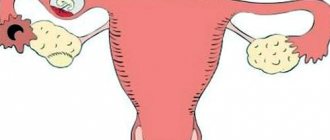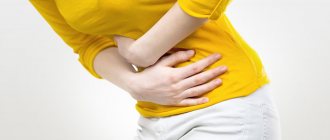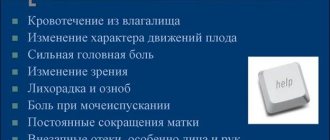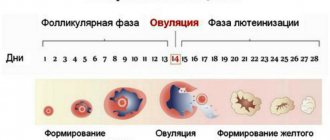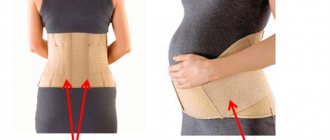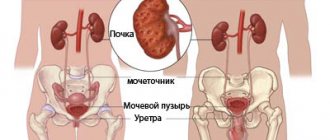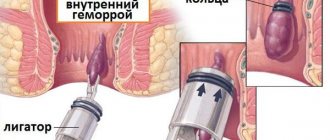Spread of pain from the rectus abdominis muscle
Myofascial trigger points located in the abdominal muscles may present with referred pain, which can be difficult to diagnose. False visceral pain, manifested from myofascial trigger points embedded in the abdominal muscles, can arise not only in the same segment of the abdominal wall; in addition, it can also radiate to the back. Painful sensations caused by trigger points are often accompanied by somatovisceral reactions, in the form of violent vomiting, nausea, loss of appetite, intestinal colic, loose stools, spasm of the sphincters and bladder, and menstrual irregularities. Such symptoms, accompanied by abdominal pain, may resemble acute diseases of the internal organs, for example, cholecystitis or appendicitis.
The rectus abdominis muscle is attached inferiorly along the crest of the pubic bone, with intertwining fibers at the level of the symphysis. At the top, the rectus abdominis muscle is attached to the cartilages of the ribs V, VI and VII. The fibers of this muscle are interrupted by three or four transverse tendinous septa, one of the three permanent septa located near the apex of the xiphoid process, another at the level of the umbilicus, and the third septum located midway between them. In some cases, there are also one or two bridges, partially formed, and they are located below the navel. The fibers of the upper rectus abdominis muscle can sometimes overlap the abdominal portion of the pectoralis major muscle, which can cause pain caused by myofascial trigger points in this area and radiating down the front of the chest.
The functions of the abdominal muscles are aimed mainly at increasing intra-abdominal pressure, flexion and rotation of the spine. The rectus abdominis muscle is the primary mover, providing flexion of the lower thoracic and lumbar spine. The rectus abdominis muscle is largely involved in the tension of the anterior abdominal wall, thereby causing an increase in intra-abdominal pressure.
A single group of muscles of the abdominal wall of the abdomen is involved in the implementation of rapid and complete exhalation during rapid breathing, helping to drive blood from the veins of the abdomen to the heart. When the abdominal wall relaxes at the moment of inhalation, blood flow in the abdominal veins increases, which stimulates the outflow of blood from the lower extremities.
When exhaling, in the absence of pathology of the valves of the veins of the lower extremities, the muscles of the abdominal wall contract and the blood tends upward to the heart.
The rectus abdominis muscle responds during walking to each step cycle during walking.
The rectus abdominis muscle is actively involved during a jump at the moment the feet lift off the support, but is not always active when landing.
When walking uphill, the abdominal muscles will be more active than when walking on the plain.
The rectus abdominis muscles, when flexing and extending the spine, are antagonists of the group of paravertebral muscles, especially the latissimus dorsi, and are synergists with the iliopsoas muscle, acting together during flexion of the lumbosacral region.
Innervation of the rectus abdominis muscle
The rectus abdominis muscle is innervated by 7-12 intercostal nerves, originating from the corresponding spinal nerves. The muscle fibers between the different tendon bridges are innervated by the nerves of different segments, especially in the upper half of this muscle.
Inside the rectus abdominis muscle or in its transverse sheath, compression of the anterior branch of the spinal nerve can occur, thereby provoking true rectus abdominis syndrome, which is characterized by pain in the lower abdomen or pelvic area, simulating a gynecological disease in women.
Prevention of myositis
Prevention of myositis is based on eliminating or minimizing trigger and risk factors. The following tips and tricks can help prevent the development of muscle inflammation:
- Maintain adequate physical activity.
- Sports should be regulated. Before intense exercise, a warm-up must be carried out. It is recommended to use protective sports equipment (belts, knee pads, etc.).
- Stop using tobacco products, drugs, and alcoholic beverages.
- Avoid hypothermia and drafts.
- Eat a balanced, nutritious diet.
- Observe hygiene rules.
- Treat existing diseases in a timely manner.
Diagnostics
Differential diagnosis of diseases caused by trigger points in the abdominal muscle wall should take into account diseases such as:
- joint diseases,
- fibromyalgia,
- appendicitis,
- stomach ulcer,
- cholelithiasis with colic,
- colitis,
- diseases of the urinary system,
- menstrual irregularities,
- chronic pain in the pelvic cavity
- and other diseases.
When examining a patient, it is very important to pay serious attention to the patient’s posture when walking, standing and sitting.
Anamnestic data can help identify the cause of complaints of pain. The doctor draws up an accurate pain distribution diagram based on the patient’s words.
Myofascial trigger points of the rectus abdominis muscle depress its supporting function. If they are present in the rectus abdominis muscle, the patient's stomach sag when standing. A tight cord is felt throughout the abdomen, which is associated with an active trigger point, shortening only one segment of the muscle between the transverse tendon bridges in which it is located.
An active myofascial trigger point inhibits the contraction of adjacent segments of the rectus abdominis muscle. Contraction would help relieve tension in the affected muscle fibers, lengthening, rather than shortening the entire muscle as a whole. When taking deep breaths, the patient exhibits paradoxical breathing. While during quiet breathing exhalation is carried out due to the elasticity of the lungs and less assistance from the muscles is required, patients will subconsciously restrain the normal contraction of the diaphragm during inhalation, due to fear of pain when stretching the rectus abdominis muscle. This is a reflex inhibition of the muscles - the diaphragm and rectus abdominis.
And at the moment when the patient takes a deep breath with the participation of the diaphragm and thereby causes a protrusion of the abdomen, the pain reflected from the trigger points sharply worsens.
If there are trigger points in the rectus abdominis muscle, referred pain may be distributed along both sides of the spine, across the lower back. With deep breathing, the pain always intensifies, in particular when the back is straightened in the presence of pronounced lumbar lordosis, which subsequently causes stretching of the rectus abdominis muscle. Back pain caused by trigger points of the paravertebral muscles does not always affect the act of breathing. A hernial formation in the abdominal cavity is detected with the patient standing.
Treatment of myositis
Treatment of myositis, depending on the causes of its occurrence, can be carried out by various specialists. For example, for infectious etiology, therapy is prescribed by an infectious disease specialist or therapist, for traumatic etiology, therapy is prescribed by an orthopedic traumatologist, etc.
The remedies used for myositis can be divided into medications and physiotherapy. Less often there is a need for surgical interventions.
Drug therapy
For bacterial myositis, the basis of treatment is antibiotics, for parasitic myositis - anthelmintics. The exact drug and its group are determined by the doctor. In autoimmune pathologies, glucocorticosteroid and immunosuppressive therapy may be required. To combat muscle pain and elevated body temperature, non-steroidal anti-inflammatory drugs (NSAIDs) are used: diclofenac, ibuprofen.
Physiotherapy
Physical exercise and exercise therapy (PT) are an important part of the treatment of all types of myositis. They help reduce swelling, restore muscle strength and improve overall well-being3. The therapy program is drawn up by a physiotherapist. Massage, magnetic therapy, moxotherapy (warming), warm dry wraps, and ultrasound are also used.
Dry heat for myositis
Dry heat for myositis
One of the methods for treating myositis is dry heat. This procedure improves blood supply to the affected muscle and normalizes its tone. However, it is contraindicated in active infectious diseases, especially purulent processes, which may worsen.
Dry heat helps relieve cervical myositis. Photo: imagepointfr / Depositphotos
Surgery
Surgery is performed for purulent forms of myositis. The essence of the operation is to open the purulent focus, remove purulent-necrotic masses and establish drainage. After this, active antibiotic therapy is carried out.
Symptoms caused by trigger points located in the abdominal muscles
Difficult-to-explain abdominal pain can often cause diagnostic confusion.
Referred pain caused by myofascial trigger points located in the abdominal muscles and somatovisceral effects can mimic diseases of the internal organs and systems.
In another case, on the contrary, with diseases of internal organs and systems, there is a profound impact on the sensitive somatic system of reflex activity. At the same time, active myofascial trigger points are aggravated, which causes the persistence of pain and other symptoms for a long time, even after the patient has recovered from the initial disease.
Active myofascial trigger points, localized in the abdominal muscles, for example, in the rectus muscle, can cause conditions such as: difficult muscle contraction, with the inability to “pull in” the stomach, relaxation, bloating. It is important to differentiate this condition from ascites.
Referred pain in the right upper quadrant can be caused by trigger points located along the outer edge of the rectus abdominis muscle. They can mimic the pain that accompanies gallbladder disease.
Referred pain simulating appendicitis may be projected from trigger points located in the lateral border of the rectus abdominis muscle and in the right lower quadrant.
Classification
In clinical practice, several classifications of muscle myositis are used, which are based on the etiology, characteristics of symptoms and the course of the disease.
Depending on the origin, all myositis is divided into the following forms¹:
- Infectious purulent. Variants of myositis caused by pathogenic bacteria, in which the inflammatory process is accompanied by the formation of purulent-necrotic masses.
- Infectious non-purulent. Inflammation of striated muscles of infectious origin (most often viral), in which purulent masses do not form. They occur more easily than purulent forms.
- Parasitic. Muscle myositis, which is the result of toxic-allergic reactions and characteristic changes caused by infection with protozoa.
- Myositis ossificans. A characteristic difference is the deposition of calcium salts in the connective tissue. The shoulders, hips and buttocks are most often affected.
- Polymyositis. A variant of autoimmune myositis, in which a large number of muscles become inflamed at once. In children, such myositis can be combined with damage to the lungs, heart, blood vessels and skin, and in adults it is often associated with malignant tumors of internal organs.
- Dermatomyositis or Wagner's disease. An independent autoimmune pathology, in which, in addition to inflammation of the striated muscles, the skin, smooth muscles and internal organs are also affected.
Depending on the prevalence of the pathological process, the following are distinguished:
- Local myositis. More often they are of traumatic and infectious origin. Accompanied by inflammation of one or more adjacent muscles.
- Diffuse or generalized. Inflammation of skeletal muscles in different parts of the body differs. In most cases, they are associated with autoimmune pathologies.
Based on the activity and nature of inflammation, myositis is divided into the following options:
- Spicy. They are characterized by a debut with pronounced symptoms.
- Subacute. They often appear gradually, but progress relatively quickly.
- Chronic. They can be the result of acute myositis or develop independently, accompanied by moderate persistent symptoms.
Figure 1. Exercises for the neck: maximum turns of the head to the right and left (5 times), slow tilts of the head to the shoulders to the right and left (5 times in each direction). Dynamic resistance of the neck and palms to head tilts in different directions. Image: cteconsulting/Depositphotos
Activation and long-term existence of myofascial trigger points
The reason for the long-term existence of myofascial trigger points can be structural and systemic factors, as well as posture and physical activity that are not corrected in a timely manner.
Muscles that are acutely or chronically overused can cause trigger points. Severe injuries, diseases of internal organs, emotional stress, as well as mechanical and toxic stress can cause the development of myofascial trigger points.
The location of active myofascial trigger points of the rectus abdominis muscle is usually the angle between the xiphoid process and the costal arch or between the umbilicus and the xiphoid process. In addition, trigger points can be located in the middle or lower part of the rectus abdominis muscle, along its lateral edge and in the area where the muscle attaches to the pubic bone.
Releasing Myafascial Trigger Points
Release from myafascial trigger points is facilitated by post-isometric relaxation, methods of contraction and relaxation, methods of cooling and stretching the abdominal muscles. The release method using fingertip pressure on a painful trigger point is only applicable to the superficial external rectus abdominis muscle. To treat myofascial trigger points at the insertions of the abdominal muscles, it becomes necessary to inactivate the central trigger point that causes them.
Corrective Actions
The persistence of the activity of the myofascial trigger point for a long time after the onset of an acute disease of the internal organ is facilitated by the fact that the initial cause, that is, the underlying disease - a tumor, stomach ulcer, intestinal paresis - has not been eliminated. Therefore, treatment aimed at getting rid of myofascial trigger points will give a temporary, partial effect. For a complete cure, it is necessary to eliminate the causative factor - a disease of the internal organ.
When a muscle remains in a stressful state for a long time, such as: emotional stress, viral disease, mechanical distortion, poor posture, stoop, it is also important to eliminate the cause that does not contribute to healing.
The patient should place a small pillow on the chair to support the lower back and sit leaning back in the chair. In this position, the lumbar lordosis increases, the chest rises slightly, and the longitudinal muscle fibers of the abdominal wall stretch.
It is necessary to avoid wearing a tight belt in order to improve blood circulation in the muscles.
Physical exercise
It is important to regularly perform special exercises for a long time to maintain normal muscle tone and form the correct pattern of movements.
The patient needs to perform therapeutic exercises, consisting of exercises to strengthen the abdominal muscles, aimed at developing diaphragmatic breathing and eliminating pelvic distortion.
All rights reserved by copyright law. No part of the contents of the site may be used, reproduced, transmitted by any electronic, copying or other means without the prior written permission of the copyright owner.
Complications of myositis
Potential complications of muscle inflammation depend on the etiology of the disease. The most likely ones include:
- Spread of the purulent process to adjacent tissues with the formation of osteomyelitis, abscesses and phlegmons, purulent arthritis.
- Limitation of physical capabilities, contractures and muscle atrophy.
- Impaired swallowing and breathing, which leads to respiratory failure and the risk of developing aspiration pneumonia.
- Rhabdomyolysis is the melting of muscle tissue with breakdown products entering the systemic circulation. In this case, renal failure and sepsis can develop, which often lead to death.


